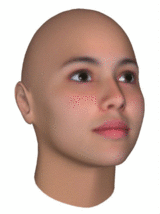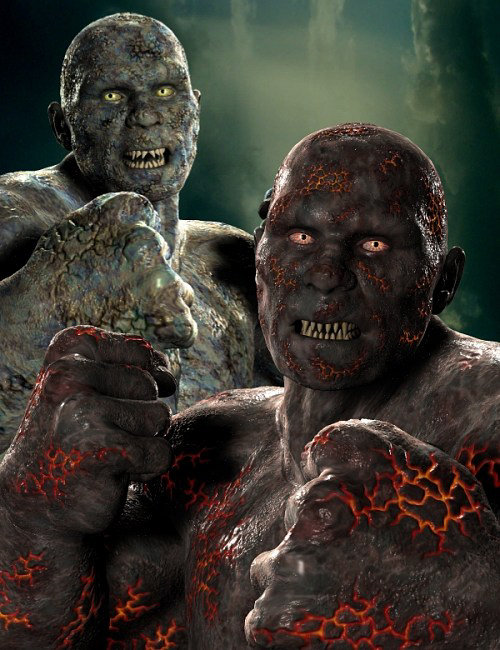Contents
- Statement 1
- (See
![[http]](http://wiki.commres.org/imgs/http.png) Creating Fictional Characters—Part 1: Characters Are Story People(http://lillieammann.com/2009/06/08/creating-fictional-characters%E2%80%94part-1-characters-are-story-people/)) Creating fictional character is about building a storyline. Writers usually identify themselves as character-driven or plot-drive. Writers for 3d animation movies also do the same thing. If characters are fully described and the writer has a certain image in his/her mind, drawing preliminary character would be a (somewhat) smooth process. If the writer focuses more on plot, there may be more room for tweaking the look of the character. However, both would be important: plot bears a certain type of character; characters (and their actions) evolve into events and plots.
Creating Fictional Characters—Part 1: Characters Are Story People(http://lillieammann.com/2009/06/08/creating-fictional-characters%E2%80%94part-1-characters-are-story-people/)) Creating fictional character is about building a storyline. Writers usually identify themselves as character-driven or plot-drive. Writers for 3d animation movies also do the same thing. If characters are fully described and the writer has a certain image in his/her mind, drawing preliminary character would be a (somewhat) smooth process. If the writer focuses more on plot, there may be more room for tweaking the look of the character. However, both would be important: plot bears a certain type of character; characters (and their actions) evolve into events and plots.
In real life characters are revealed; in fiction characters are created.
See also![Amazon:ISBN-0806139188 [ISBN-0806139188]](http://images.amazon.com/images/P/0806139188.01.MZZZZZZZ.gif) (Creating Characters: How to Build Story People)
(Creating Characters: How to Build Story People)
You start from a foundation of your fantasies and feelings. Because the character you can’t fantasize and feel with will fail. . . .
Just as in real life, we form dominant impressions of characters based on what we see:
- Sex – woman, man, girl, boy
- Age – young, old, 18-years-old, baby, teenager
- Vocation – doctor, nurse, housewife, bag lady, construction worker, lawyer
- Manner – surly, bubbly, sloppy, friendly, pompous, fun-loving
- Sex – woman, man, girl, boy
- Statement 2
- The character ... is settled down with the point of view (thorough the eyes of another person, through dialogue, through actions, through inner thoughts, etc.).
- Statement 3
- Creating characters is building tags, traits, and relationships. The basics were (1) gender, (2) age, (3) vocation, (4) manner. In addition to them, appearance, lifestyle, habits, beliefs, history, memories, membership, motivation and goals, relationships with other types of people, etc. are needed.
- Statement 4
- Putting right kinds of words in their mouths is important.
1. Q ¶
read: ![[http]](http://wiki.commres.org/imgs/http.png) animating shrek(http://www.digitalmediafx.com/Shrek/shrekfeature04.html)
animating shrek(http://www.digitalmediafx.com/Shrek/shrekfeature04.html)
read:![[http]](http://wiki.commres.org/imgs/http.png) The making of shrek(http://www.digitalanimators.com/2001/05_may/features/Shrek/TheMakingShrek.htm)
The making of shrek(http://www.digitalanimators.com/2001/05_may/features/Shrek/TheMakingShrek.htm)
![[http]](http://wiki.commres.org/imgs/http.png) animating shrek(http://www.digitalmediafx.com/Shrek/shrekfeature04.html)
animating shrek(http://www.digitalmediafx.com/Shrek/shrekfeature04.html)read:
![[http]](http://wiki.commres.org/imgs/http.png) The making of shrek(http://www.digitalanimators.com/2001/05_may/features/Shrek/TheMakingShrek.htm)
The making of shrek(http://www.digitalanimators.com/2001/05_may/features/Shrek/TheMakingShrek.htm)1.2. What are the role of these kinds of programs? ¶
![[http]](http://wiki.commres.org/imgs/http.png) Cybia(http://www.cybia.co.uk/characterlinks.htm) at UK
Cybia(http://www.cybia.co.uk/characterlinks.htm) at UK![[http]](http://wiki.commres.org/imgs/http.png) 3D software(http://www.3dlinks.com/links.cfm?categoryid=1&subcategoryid=1&CFID=33742251&CFTOKEN=57225245)
3D software(http://www.3dlinks.com/links.cfm?categoryid=1&subcategoryid=1&CFID=33742251&CFTOKEN=57225245)![[http]](http://wiki.commres.org/imgs/http.png) source URL(http://www.fxrsoft.com/default.asp?page=products/creaturecreator/lwgallery.html)
source URL(http://www.fxrsoft.com/default.asp?page=products/creaturecreator/lwgallery.html)![[http]](http://wiki.commres.org/imgs/http.png) source URL(http://www.fxrsoft.com/default.asp?page=products/creaturecreator/lwgallery.html)
source URL(http://www.fxrsoft.com/default.asp?page=products/creaturecreator/lwgallery.html)Or face generation aid program such as
![[http]](http://wiki.commres.org/imgs/http.png) Face_Gen(http://www.facegen.com/)
Face_Gen(http://www.facegen.com/)http://www.reallusion.com/iClone/iclone_videogallery.html
2. Preliminary exploration for "3D Digital Actor Casting" System ¶
Are art director or designers practically use a site like ![[http]](http://wiki.commres.org/imgs/http.png) this(http://www.the123d.com/3d-character.html) (the123d.com)? For example, the below image(s) are sold for 120 dollars:
this(http://www.the123d.com/3d-character.html) (the123d.com)? For example, the below image(s) are sold for 120 dollars:
Or the belows are sold for 250 dollars: (![[http]](http://wiki.commres.org/imgs/http.png) Source(http://www.the123d.com/shop/products/Ogan/html/sexy_girl_women_female_01_by_Ogan.html))
Source(http://www.the123d.com/shop/products/Ogan/html/sexy_girl_women_female_01_by_Ogan.html))
There is another market place for 3d character: http://www.cacheforce.com/planet_people.html
Or![[http]](http://wiki.commres.org/imgs/http.png) URL for free 3d character models(http://www.blendernation.com/free-3d-character-models/) This is a scientist model.
URL for free 3d character models(http://www.blendernation.com/free-3d-character-models/) This is a scientist model.
Or![[http]](http://wiki.commres.org/imgs/http.png) An Easy to Use Avatar Builder(http://darwindimensions.com/)
An Easy to Use Avatar Builder(http://darwindimensions.com/)
![[http]](http://wiki.commres.org/imgs/http.png) Link(http://download.evolver.com/files1/product/26/1000000000/2d906236-bcc8-4e9d-8e6c-ca74bfa682f4/pikabooing_328.gif?width=220)
Link(http://download.evolver.com/files1/product/26/1000000000/2d906236-bcc8-4e9d-8e6c-ca74bfa682f4/pikabooing_328.gif?width=220)
See also http://www.daz3d.com/i/0/0?_m=d and http://www.daz3d.com/i/3d-models/fantasy-scifi-chars?cat=11&_m=d
See also this: http://www.geheee.com/games/AnimeCharacterGenerator.html
![[http]](http://wiki.commres.org/imgs/http.png) this(http://www.the123d.com/3d-character.html) (the123d.com)? For example, the below image(s) are sold for 120 dollars:
this(http://www.the123d.com/3d-character.html) (the123d.com)? For example, the below image(s) are sold for 120 dollars:Or the belows are sold for 250 dollars: (
![[http]](http://wiki.commres.org/imgs/http.png) Source(http://www.the123d.com/shop/products/Ogan/html/sexy_girl_women_female_01_by_Ogan.html))
Source(http://www.the123d.com/shop/products/Ogan/html/sexy_girl_women_female_01_by_Ogan.html))There is another market place for 3d character: http://www.cacheforce.com/planet_people.html
Or
![[http]](http://wiki.commres.org/imgs/http.png) URL for free 3d character models(http://www.blendernation.com/free-3d-character-models/) This is a scientist model.
URL for free 3d character models(http://www.blendernation.com/free-3d-character-models/) This is a scientist model. Or
![[http]](http://wiki.commres.org/imgs/http.png) An Easy to Use Avatar Builder(http://darwindimensions.com/)
An Easy to Use Avatar Builder(http://darwindimensions.com/)![[http]](http://wiki.commres.org/imgs/http.png) Link(http://download.evolver.com/files1/product/26/1000000000/2d906236-bcc8-4e9d-8e6c-ca74bfa682f4/pikabooing_328.gif?width=220)
Link(http://download.evolver.com/files1/product/26/1000000000/2d906236-bcc8-4e9d-8e6c-ca74bfa682f4/pikabooing_328.gif?width=220)See also this: http://www.geheee.com/games/AnimeCharacterGenerator.html
3. Design process of digital characters ¶
소개
이 연구는 아트디자이너 혹은 디렉터가 디지털캐랙터 생성을 위해서 시나리오를 어떻게 활용하고, 이를 통해서 무엇을 얻는지, 그리고 동일한 시나리오의 동일한 인물의 디자인이라면 공통적인 요소들이 고려가 되는지 등등에 대해서 탐색적으로 조사하는 것을 목적으로 한다. 영화 '괴물'의 괴물은 2년의 준비기간을 거치면서 4000 여장의 스케치가 사용되어 약 2년의 준비기간을 거친후에 영화에 캐스트될 수 있었다. 좋은 영화를 만들기 위해서 창의력과 창작력을 쏟아붓는 것은 바람직하다고 하겠다. 그러나, 2년여 동안 감독과 아트디렉터 간의 커뮤니케이션 과정을 축약할 수 있는 무엇인가가 있다면 영화 제작의 프로세스를 단축시킬 수 있다. [1] 이연구는 아트디자이너가 캐릭터를 디자인할때 어떤 과정을 거치는가?라는 질문을 함으로써 영화캐릭터 디자이너가 시나리오를 읽고서 특정한 인물을 디자인할 때에 무엇을 사용하고, 어떤 사고과정을 거치는지에 대해서 알아보려고 한다.
이 연구는 영화/3D 애니메이션 작품의 디지털캐릭터(프로토타입)를 자동으로 만들어주는 어플리케이션(디지털 액터 캐스팅 시스템)을 개발하기 위한 선행 연구이다. 하나의 사례에 대한 30명의 각기 다른 캐릭터 스케치 결과물을 통해, 디자인할 때 중요하게 고려되는 캐릭터 요소들(외적, 내적, 환경 등)이 어떤 것들인지 파악하고, 그것들이 실제 디자인(스케치)에 무엇을 참조로 하여 어떻게 반영되는지, 만일 그 과정에 어떤 공통적인 패턴이 있는지 등을 조사한다. 만일 공통적으로 중요하게 고려되는 캐릭터 요소들이 추출되거나, 디자인을 위한 참조 상의 공통된 경향 또는 캐릭터 요소를 스케치에 반영할 때의 공통된 패턴 등이 발견되면, 그 결과는 디지털캐릭터 자동 생성 어플리케이션에서 유의미하게 활용될 수 있을 것이다. 그렇지만 단지 하나의 사례를 통해 디지털캐릭터 자동 생성 어플리케이션에 적용시킬 수 있는 모든 것을 얻기는 불가능할 것이다. 이 연구는 그 "모든 것"을 얻기 위한 시도의 첫걸음에 해당한다. 이 연구가 성공적으로 수행된다면 이와 관련된 일련의 후속 연구들을 통해 더 많은 것들을 얻을 수 있을 것이며, 그 과정을 통해 디지털캐릭터 자동 생성 어플리케이션이 개발되고, 추후 지속적인 보완과 버전 업그레이드가 이루어질 수 있을 것이다.
데이터수집이 연구는 영화/3D 애니메이션 작품의 디지털캐릭터(프로토타입)를 자동으로 만들어주는 어플리케이션(디지털 액터 캐스팅 시스템)을 개발하기 위한 선행 연구이다. 하나의 사례에 대한 30명의 각기 다른 캐릭터 스케치 결과물을 통해, 디자인할 때 중요하게 고려되는 캐릭터 요소들(외적, 내적, 환경 등)이 어떤 것들인지 파악하고, 그것들이 실제 디자인(스케치)에 무엇을 참조로 하여 어떻게 반영되는지, 만일 그 과정에 어떤 공통적인 패턴이 있는지 등을 조사한다. 만일 공통적으로 중요하게 고려되는 캐릭터 요소들이 추출되거나, 디자인을 위한 참조 상의 공통된 경향 또는 캐릭터 요소를 스케치에 반영할 때의 공통된 패턴 등이 발견되면, 그 결과는 디지털캐릭터 자동 생성 어플리케이션에서 유의미하게 활용될 수 있을 것이다. 그렇지만 단지 하나의 사례를 통해 디지털캐릭터 자동 생성 어플리케이션에 적용시킬 수 있는 모든 것을 얻기는 불가능할 것이다. 이 연구는 그 "모든 것"을 얻기 위한 시도의 첫걸음에 해당한다. 이 연구가 성공적으로 수행된다면 이와 관련된 일련의 후속 연구들을 통해 더 많은 것들을 얻을 수 있을 것이며, 그 과정을 통해 디지털캐릭터 자동 생성 어플리케이션이 개발되고, 추후 지속적인 보완과 버전 업그레이드가 이루어질 수 있을 것이다.
우선 기본적으로 이 연구는 아래의 데이터수집과정을 거친다.
시나리오의 선정| 데이터수집과정 | |
| 시나리오 선정 | 독창적이며 참가자들에게 많이 알려져 있지 않은 스토리를 선정하고 이를 바탕으로 실험에 참여하도록 함 |
| 실험참여자 선정 | 약 30명의 디지털 애니메이션 수업을 듣는 학생 |
| 데이터 수집 1차 | 시나리오을 정독한 후, 캐릭터를 스케치함 |
| 데이터 수집 2차 | 캐릭터 분석 결과를 스케치로 전환하는 과정에서 어떠한 캐릭터 요소를 반영하였는지, 반영된 캐릭터 요소 간의 비중(가중치?)의 차이는 있었는지, 비중의 차이가 있었다면 그것은 어떠한 근거에서 비롯한 것인지, 반영하고자 하는 캐릭터 요소가 캐릭터 스케치 상에 어떻게 표현되었는지, 그 캐릭터 요소가 왜 그러한 스케치로 표현되었는지 조사함. 또한 위의 과정에서 디자이너가 무엇을 레퍼런스하였고, 어떤 것을 참조하여 캐릭터를 디자인하였으며 참여자 간에 공통점은 무엇이었는지 알아본 후 이를 바탕으로 FGI (Focus Group Interview)를 수행함 |
| 분석 | 수집된 정성데이터를 Grounded theory 방식으로 정리하고 emerging theme 의 존재를 살펴봄 |
확보된 시나리오
- <Labyrinth> (Jim Henson, 1986), http://www.imsdb.com/scripts/Labyrinth.html
- <The Neverending Story> (Wolfgang Petersen, 1984), http://www.imsdb.com/scripts/Neverending-Story,-The.html
- <Hellboy> (Guillermo del Toro, 2004), http://www.imsdb.com/scripts/Hellboy.html
- <Hellboy2: The Golden Army> (Guillermo del Toro, 2008), http://www.imsdb.com/scripts/Hellboy-2-The-Golden-Army.html
- <Pan's Labyrinth Laberinto del Fauno>(Guillermo del Toro, 2006), http://www.dailyscript.com/scripts/PansLabyrinthEnglishScreenplay.pdf
- <The Spiderwick Chronicles>(Mark Waters, 2008), http://www.spiderwickchronicles.com/ (NA)
- <The Neverending Story 2>(George Miller, 1990), (NA)
3.1. 시나리오, 확보된 ¶
 Hellboy.docx (229.67 KB)
Hellboy.docx (229.67 KB) Hellboy.hwp (205.5 KB)
Hellboy.hwp (205.5 KB) Hellboy2.docx (229.67 KB)
Hellboy2.docx (229.67 KB) Hellboy2.hwp (213 KB)
Hellboy2.hwp (213 KB) Labylinth.hwp (143 KB)
Labylinth.hwp (143 KB) LabyrinthScript.docx (147.36 KB)
LabyrinthScript.docx (147.36 KB) PansLabyrinthEnglishScreenplay.pdf (371.53 KB)
PansLabyrinthEnglishScreenplay.pdf (371.53 KB) TheNeverendingStory.docx (81.97 KB)
TheNeverendingStory.docx (81.97 KB) TheNeverendingStory.hwp (78.5 KB)
TheNeverendingStory.hwp (78.5 KB)4. 자료 ¶
The total cost for us to design and develop all of the art for a casual game is typically $5000 ...
. . . . http://www.allied-studios.com/
http://dreamlight.com/insights/04/character.html
http://www.softwaysolutions.com/3d-character-design-modeling-animation-houston-texas-uk-europe.html
http://www.vfs.com/splash_korea.php
http://www.tutorial9.net/resources/30-jaw-dropping-3d-character-creations/
한 편의 영화가 완성되면, 남는 것은 오로지 그 '결과'뿐이다. 두시간여 분량의 필름과, 그 필름이 남긴 흥행성적, 몇 줄로 용약된 수상내역 같은 것들 . . .
그러나, 그렇다고 해서, 진정 그 영화가 만들어진 '과정'은 증발되어버리는 것일까? 만들어진 영화보다도 더욱 드라마틱하고, 구구절절 기구한 사연들로 넘쳐나는 그 복잡한 과정이, 감독 또는 제작자가 내뱉는 "촬영 중 고생한 모든 스태프와 배우들에게 감사합니다." 같은 의례적인 수상소감 한마디로 압축될 수 있는 것일까?
. . . .
내게 있어서 <괴물>은 말 그대로 '괴물' 같은 영화였다. 비록 <지옥의 묵시록>과는 비교조차 할 수 없는 소규모(?) 영화이지만, 나름대로의 고통과 눈물, 광기와 집착을 통해 만들어졌다는 점에서 별반 다를 바가 없다. 그 고통스러우면서도 아름다운 제작과정의 순간순간들이 이 책에 고스란히 담겨져 있다.
. . . .
![[http]](http://wiki.commres.org/imgs/http.png) Grounded theory explanation(http://www.analytictech.com/mb870/introtoGT.htm), analytictech
Grounded theory explanation(http://www.analytictech.com/mb870/introtoGT.htm), analytictech ![[http]](http://wiki.commres.org/imgs/http.png) Grounded theory: a thumbnail sketch (http://www.scu.edu.au/schools/gcm/ar/arp/grounded.html)
Grounded theory: a thumbnail sketch (http://www.scu.edu.au/schools/gcm/ar/arp/grounded.html)![[http]](http://wiki.commres.org/imgs/http.png) Grounded Theory Institute(http://www.groundedtheory.com/)
Grounded Theory Institute(http://www.groundedtheory.com/)- book
![[http]](http://wiki.commres.org/imgs/http.png) Digital Character Development: Theory and Practice(http://www.focalpress.com/Book.aspx?id=3096)
Digital Character Development: Theory and Practice(http://www.focalpress.com/Book.aspx?id=3096)












